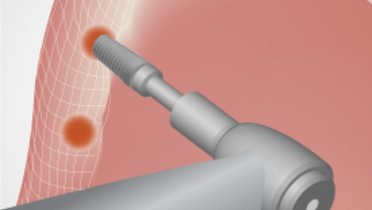The treatment of the edentulous jaw can be a mixture of placing implants in healed and fresh extraction sockets. Unequal hard and soft tissue levels around the implants (Fig. 1&2), especially in the interforaminal region, can be adjusted by leveling the bone...
